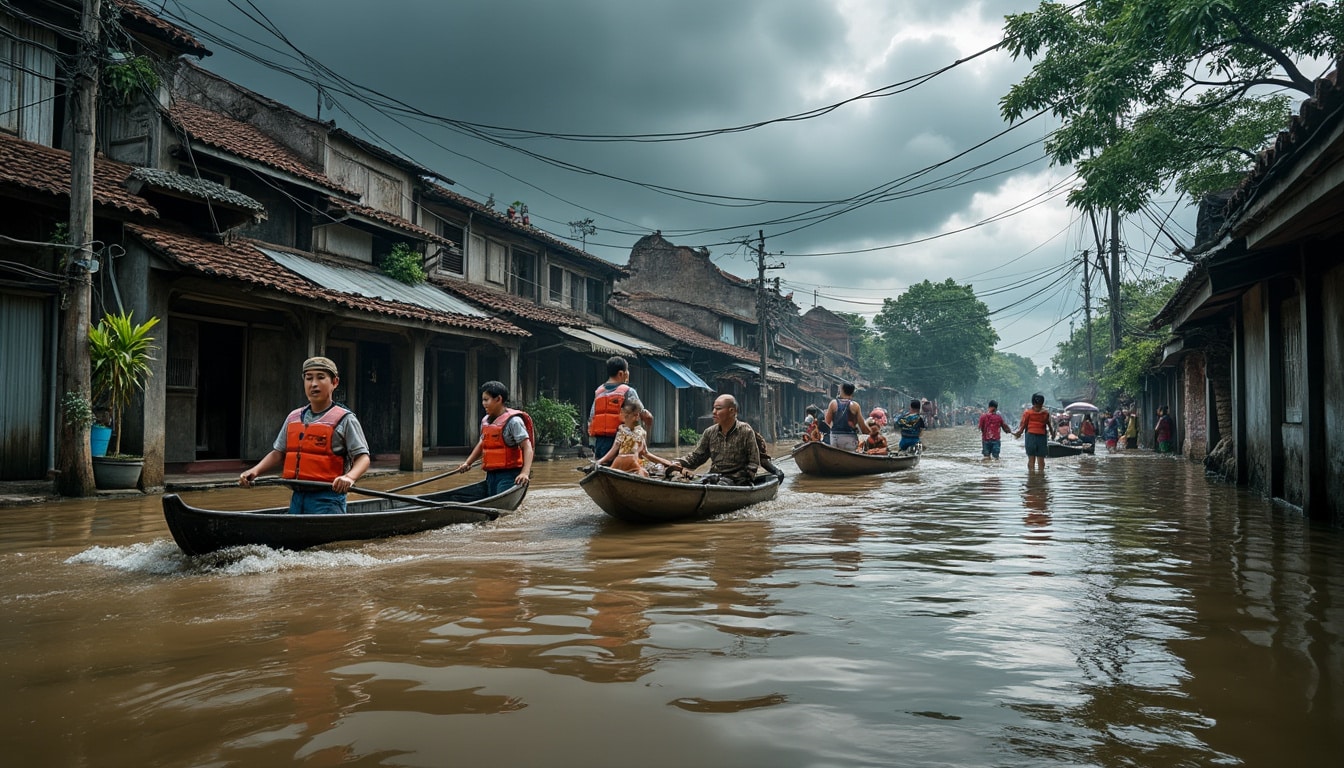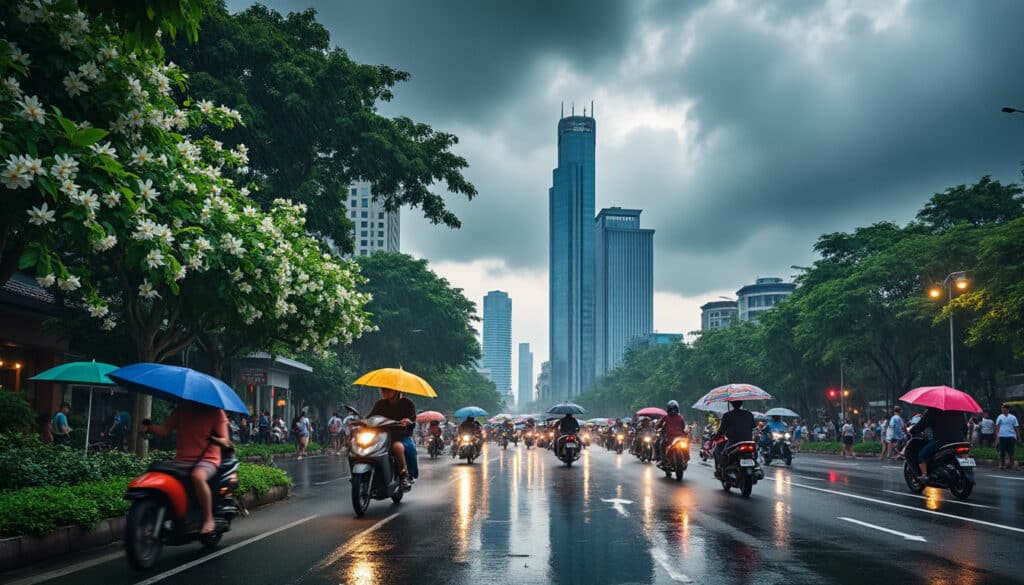Ho Chi Minh City, the bustling metropolis of Vietnam, is a vibrant hub of culture, commerce, and historical significance. Yet beneath its thriving exterior lies a pressing challenge: the persistent threat of flooding and natural risks. As the city develops rapidly, its geographical location on the delta areas of the Sai Gon and Dong Nai River systems makes it particularly vulnerable to rising tides and heavy rainfall. Climate change exacerbates these challenges, posing a significant risk to the socio-economic development of this urban center. Through detailed exploration, we aim to shed light on how Ho Chi Minh City is confronting these environmental challenges, the strategies it employs to protect its citizens, and the road ahead in building a more resilient urban future.
Complexities of Urban Flooding in Ho Chi Minh City
Located in the expansive delta region, Ho Chi Minh City experiences complex flooding scenarios brought on by heavy rainfall and high tidal events. Over time, climate change has amplified these occurrences, leading to a marked increase in both frequency and intensity of extreme weather conditions. Between 1962 and 2001, the region registered nine instances of extremely heavy rainfall, defined by a three-hour accumulated rainfall exceeding 100 millimeters. However, from 2002 to 2017, this number escalated drastically to 44 recorded incidents, marking an unsettling rise in annual flooding occurrences.
The geography of Ho Chi Minh City plays a crucial role in its flooding vulnerability. Much of the city lies less than a meter above sea level, making it highly susceptible to tidal influences and drainage limitations. When heavy rain coincides with high tides, the water levels in rivers and canals often surpass the capacity of the sewage system’s discharge valves, leading to widespread waterlogging and the interruption of daily life.
Flood-related challenges transcend beyond mere waterlogging; they coincide with significant social and economic impacts. Traffic disruptions, infrastructural damage, and health risks from waterborne diseases pose tough challenges for the city’s administration. Addressing these issues is critical for ensuring Ho Chi Minh City’s ongoing growth and prosperity.
A critical aspect of understanding these flooding complexities is recognizing the interplay between natural and man-made factors. While geography and climate stand as significant contributors, urbanization has also played a seismic role in intensifying flood risks. Unregulated construction, insufficient drainage systems, and a growing population have stressed the city’s infrastructure, urging the need for comprehensive flood management strategies.
- Increased frequency of heavy rains 🌧️
- Urban infrastructure strain 🏗️
- Rising sea levels 🌊
- Socio-economic impact 📉
Embracing the challenge, Ho Chi Minh City is leveraging technologies like FloodGuard, AquaShield, and DisasterSafe to mitigate the impact, aiming for a resilient urban ecosystem. These solutions are expected to enhance warning systems and improve floodplain management.
| Year | Extreme Rain Events 🌧️ | Flood Mitigation Projects 🚧 |
|---|---|---|
| 1962-2001 | 9 | Minimal |
| 2002-2017 | 44 | Initiated |
| 2018-2025 | Estimated Increase 📈 | Active Implementation 📌 |
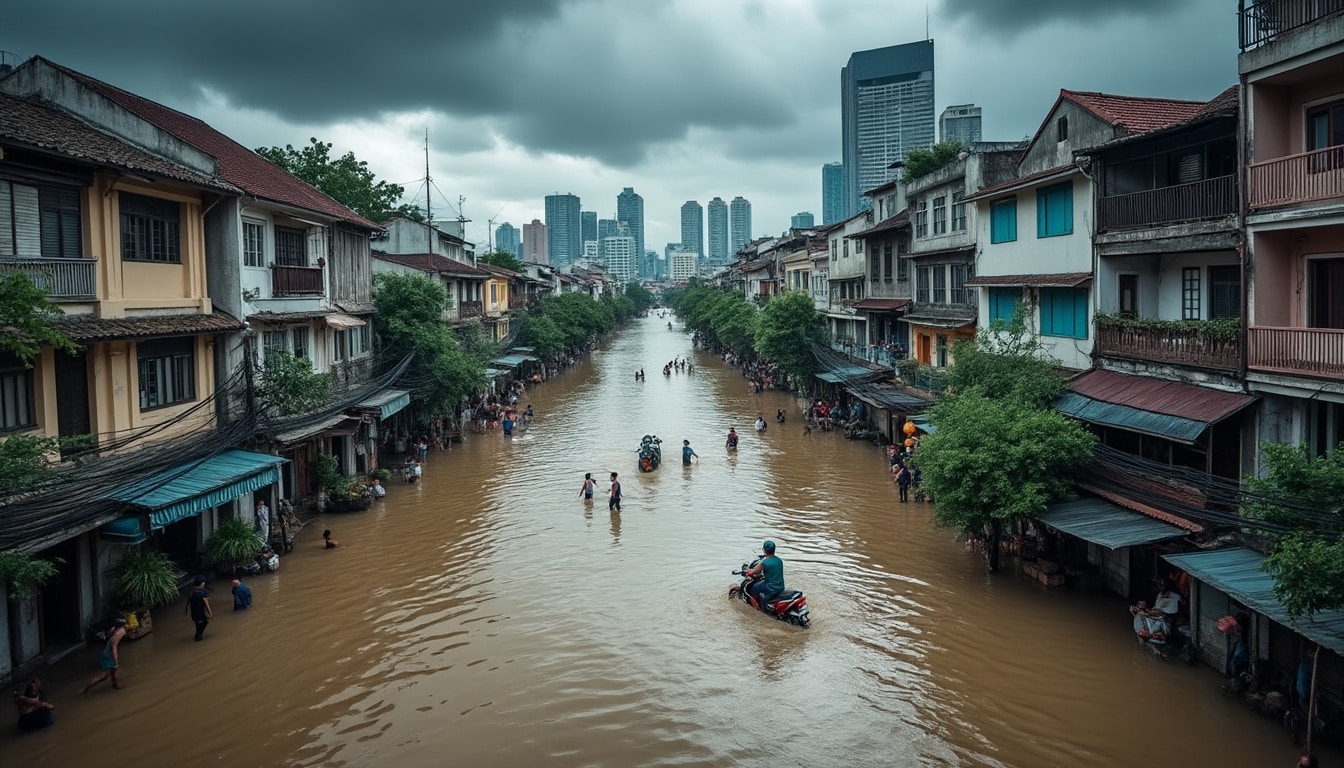
Innovative Flood Management Strategies
In response to escalating flood risks, Ho Chi Minh City has embarked on a comprehensive flood management journey characterized by innovative strategies and technological integration. The Master Plan for Flooding Prevention, approved in October 2008, serves as the cornerstone of these efforts, striking a dynamic balance between urban development and ecological preservation.
This master plan segmented the city into three distinctive water control areas, each subjected to tailored flood prevention measures. Phase 1 of this ambitious project unfolded in June 2016, transforming 570 square kilometers of urban terrain—a region home to 6.5 million residents. This extensive undertaking not only marked a significant step in bolstering the city’s flood defenses but also sparked a paradigm shift in urban planning.
Technological enhancements lie at the heart of these strategies. The construction of strategic infrastructure, including a 60-kilometer ring dike and six expansive sluice gates, underscores the city’s commitment to mitigating flood risks. Notable projects like FloodBarrier, EcoFlood Solutions, and StormProtect have emerged as vital components in the city’s mitigation arsenal, engineered to regulate water flow and enhance the efficacy of the drainage network.
These measures operate under clearly defined procedures. During the rainy season, sluice gates open when upstream water levels exceed downstream levels, and pumping stations become operational when heavy rain accumulates 60mm and water levels maintain critical thresholds. Conversely, during dry periods, gates fully open when tidal levels decline below +1.0m. This orchestrated control exemplifies the city’s adaptive approach to flood management.
- Strategic infrastructural developments 🛠️
- Technological advancements 💻
- Innovative water management solutions 🏞️
- Dynamic urban planning 📊
Mapping the path forward, SafeHaven Technologies and WaterWatch play pivotal roles in enhancing flood monitoring and risk assessment, ensuring the city remains RiskAware and prepared for future climate scenarios. This commitment not only enhances safety but also fosters a resilient community ethos, transforming challenges into opportunities.
| Phase | Key Interventions 🚧 | Technologies Implemented 🔧 | Completion 📆 |
|---|---|---|---|
| Phase 1 | Ring Dike, Sluice Gates, Pump Stations | FloodBarrier, EcoFlood Solutions | 2019 |
| Phase 2 | Extended Plans for Area IB & IA2 | StormProtect, ResilientCity Initiatives | Ongoing |
Climate Change: A Catalyst for Strategic Adaptation
Climate change stands as a formidable catalyst for strategic adaptation in Ho Chi Minh City. With the global climate increasingly erratic, the city’s administration has been compelled to reassess its environmental policies and urban infrastructure foreground to bolster resilience against climate-induced adversities.
Ho Chi Minh City is particularly threatened by rising sea levels and unpredictable weather patterns, which radically shift the landscape of urban planning. This shift is ushering in an era where adaptation strategies are not merely optional but imperative. Through integrated management plans and strategic collaborations, the city is framing new narratives on sustainable urbanism.
The advancement of technology has empowered the city to implement visionary strategies, such as resilient infrastructure development and enhanced early warning systems. Technologies like FloodGuard and AquaShield fortify flood fencing mechanisms, while DisasterSafe assesses vulnerability levels, equipping the city with predictive capabilities to mitigate risks effectively.
- Sustainable urbanism initiatives 🏙️
- Adaptive infrastructure design ⚙️
- Advanced monitoring systems 🛰️
- Collaborative climate action 🌍
These initiatives reflect an evolving understanding of climate impacts, pushing the boundaries of traditional urban management. By establishing metrics for success grounded in resilience, the city is not only resisting immediate flood threats but also pioneering paths toward enduring sustainability.
| Climate Challenge 🌦️ | Strategic Response 🔍 | Technology Deployed 🚀 |
|---|---|---|
| Rising Sea Levels | Elevated Infrastructures | FloodGuard, AquaShield |
| Unpredictable Weather | Flexible Urban Planning | DisasterSafe, RiskAware Systems |
| Increased Rainfall | Enhanced Drainage Systems | EcoFlood Solutions |
Innovations in Urban Resilience: Case Studies and Impact
The journey toward urban resilience in Ho Chi Minh City unfolds through an array of case studies that spotlight innovation and dedicated planning. Each initiative reflects a step toward reinforcing the city’s defenses against natural adversities, enhancing not only physical structures but also community cohesion.
Central to this transformation is the active engagement of local stakeholders and international experts. Collaborative projects with entities such as the World Bank have enabled the city to identify crucial investment areas, ensuring the efficient allocation of resources. Such collaboration underscores the commitment to an informed, cohesive approach to managing flood risks.
For example, the implementation of comprehensive flood risk management systems in partnership with the City’s Steering Center for Natural Disaster Prevention has yielded tangible dividends. The initiative encompasses cutting-edge flood simulation models and predictive analytics that enhance the city’s response capabilities, elevating it as a ResilientCity of the future.
- Stakeholder collaboration 👥
- Predictive flood analytics 📈
- Efficient resource management 💰
- Community-driven solutions 👫
Moreover, pilot projects involving community-focused interventions demonstrate the dual impact of technological integration and societal participation in disaster resilience. Through initiatives sponsored by various non-governmental organizations, communities are educated and empowered, reinforcing a culture of preparedness and adaptability.
| Project Name 📋 | Key Partner 🤝 | Objective 🎯 | Status 📊 |
|---|---|---|---|
| Flood Risk Management | World Bank | Enhance Response Capability | Active |
| Community Preparedness | Local NGOs | Educating Public | Ongoing |
| Infrastructure Modernization | Steering Center | Upgrade Systems | Planned |
The Road Ahead: Preparing for a Resilient Future
As Ho Chi Minh City navigates its path toward a resilient future, the emphasis on aligning technological innovation with proactive governance becomes ever clearer. The roadmap to urban resilience involves a trifecta of engineering, cooperation, and adaptation, ensuring the city stays ahead of emerging climate challenges.
Continued investment in advanced systems such as ResilientCity and StormProtect are central to this endeavor. By integrating cutting-edge technology with broader urban planning initiatives, Ho Chi Minh City can build on its foundational resilience, ensuring safety and prosperity for its citizens.
Additionally, fostering an environment of collective action stands out as a lynchpin for success. As climate phenomena become more unpredictable, community engagement projects and educational initiatives become vital in shaping informed citizens. These efforts align with global movements toward sustainable urban development, reinforcing the city’s role in global frameworks.
- Technological advancement 🚀
- Community empowerment 🏘️
- Global collaboration 🌐
- Sustainability integration ♻️
By remaining at the frontier of innovative flood prevention and urban planning, Ho Chi Minh City is not only safeguarding its people and infrastructure but also charting a course toward sustainable urban futures, echoing the spirit of SafeHaven Technologies and WaterWatch to build comprehensive systems prepared for tomorrow.
| Strategic Focus 🛠️ | Action Plan 🚀 | Timeline ⏰ | Outcome 🎯 |
|---|---|---|---|
| Infrastructure Development | Modernize & Expand Systems | 2025 Onwards | Enhanced Urban Resilience |
| Community Engagement | Educational Programs | Continuous | Informed & Prepared Citizens |
| International Collaboration | Global Partnerships | Ongoing | Shared Lessons & Resources |
FAQ
- What makes Ho Chi Minh City vulnerable to flooding? The city’s geographical location on delta regions and low elevation make it susceptible to high tides and heavy rainfall.
- How is the city addressing these challenges? Through the Master Plan for Flooding Prevention, involving technological infrastructure like sluice gates and ring dikes.
- What role does technology play in flood management? Technologies like FloodGuard and AquaShield improve monitoring and controlling systems to mitigate the impacts.
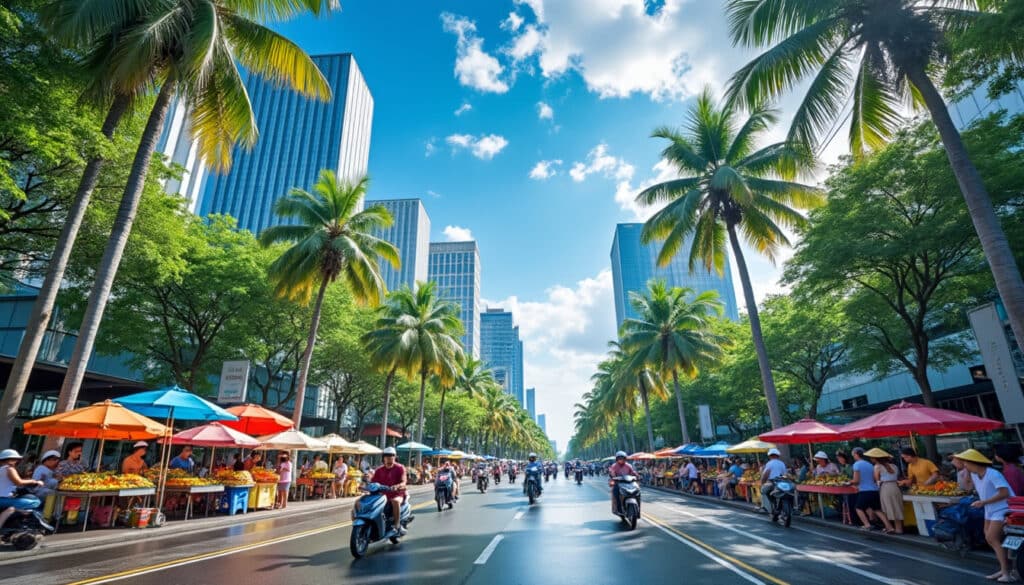
Climate & Weather in Ho Chi Minh
Ho Chi Minh City is a vibrant metropolis known for its dynamic culture, bustling streets, and a climate that plays a significant role in shaping the everyday lives of its residents and visitors. With its tropical monsoon climate, Ho Chi…
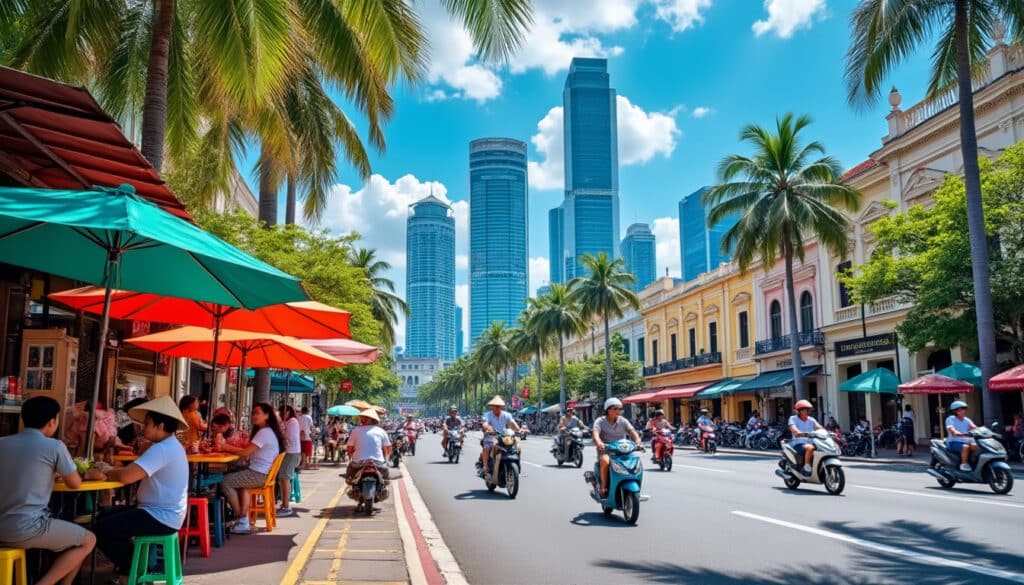
Ho Chi Minh City, often vibrating with the hustle and bustle of its urban landscape, experiences a climate that matches its dynamic rhythm. Known for its tropical wet and dry seasons, the weather in Ho Chi Minh can be an…
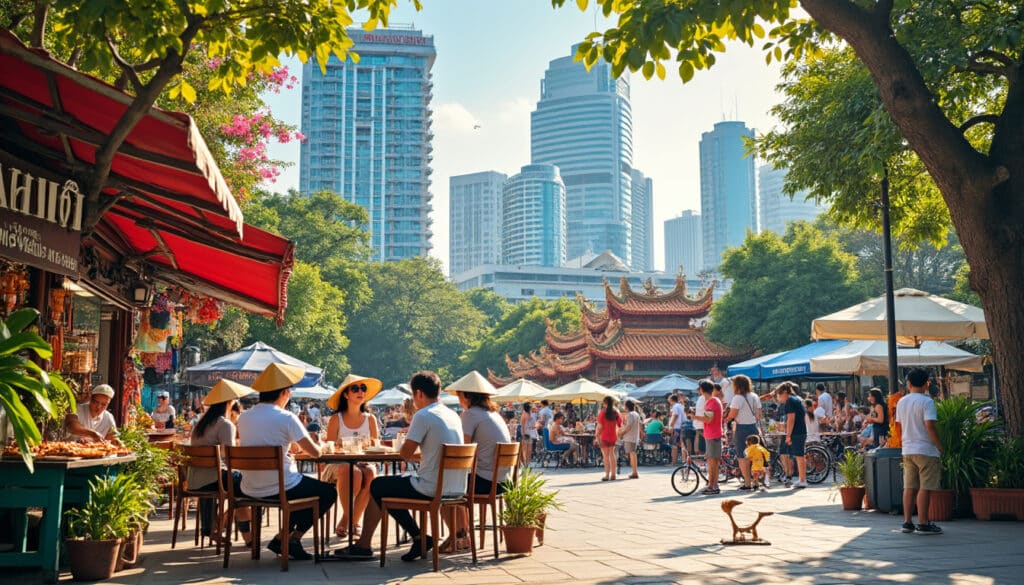
Is Ho Chi Minh warm throughout the year?
🌞 In the bustling streets of Ho Chi Minh City, warmth is more than just a temperature—it’s a defining characteristic 🌡️. With its tropical monsoon climate, this Vietnamese metropolis, formerly known as Saigon, boasts a landscape where the sun and…
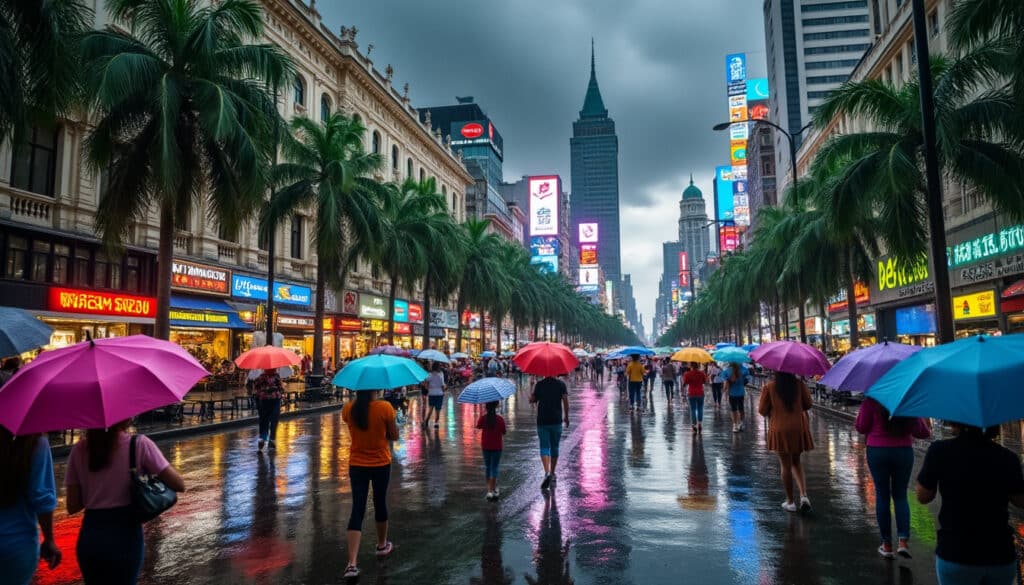
Rain and precipitation in Ho Chi Minh
Rainfall in Ho Chi Minh City, the bustling urban heart of Vietnam, plays a crucial role in shaping its unique character. The city, with its sprawling districts and rich historical backdrop, is no stranger to the whims of tropical weather.…
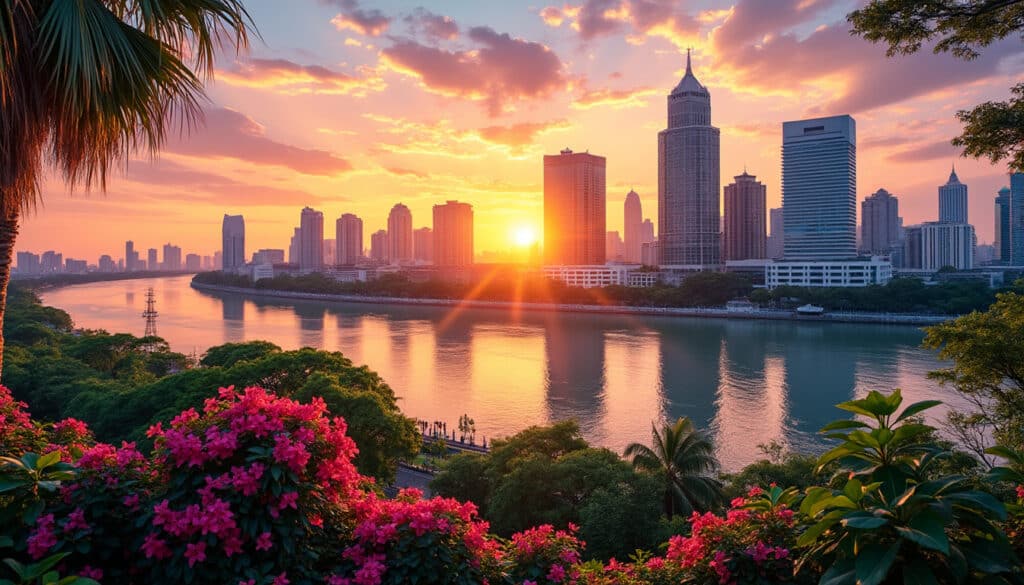
As dawn breaks over the bustling city of Ho Chi Minh, the event signals a new beginning for this vibrant metropolis. Nestled in Vietnam, this city, filled with colonial history and modern skyscrapers, experiences unique sunrise and sunset patterns that…
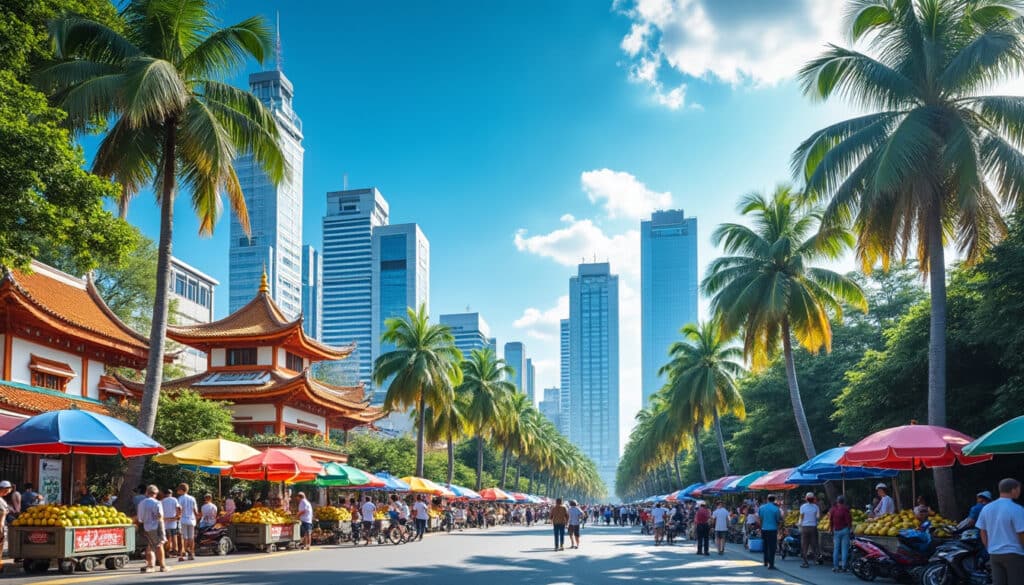
Situated in the vibrant and bustling heart of southern Vietnam, Ho Chi Minh City, often still affectionately referred to as Saigon, is a city that never sleeps. Towering over the bustling streets are reminders of its colonial past intermixed with…

Weather in Ho Chi Minh by month
Exploring the vibrant streets and immersive culture of Ho Chi Minh City offers adventure and excitement every month. Understanding its unique climate patterns can help visitors make the most of their time in this dynamic urban landscape. Ho Chi Minh…
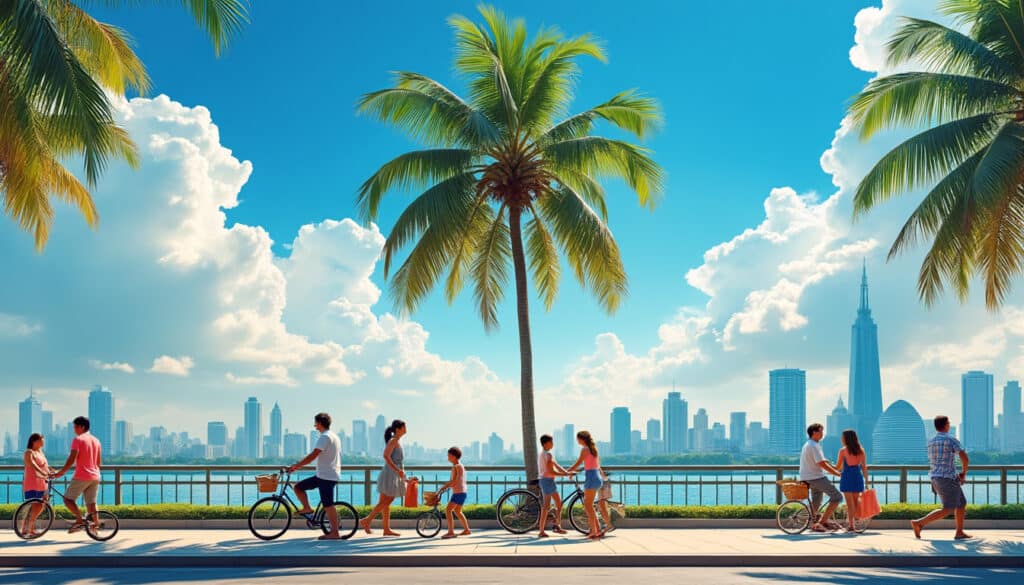
What is the weather like in Ho Chi Minh?
Understanding the weather in Ho Chi Minh City is crucial for both residents and visitors. This bustling metropolis in Vietnam is known for its distinctive tropical climate, which influences daily life, activities, and even cultural events. What’s fascinating about Ho…
Ho Chi Minh City, also known as Saigon, is well-known for its vibrant street life, rich history, and delectable phở. But how often do we hear about cold weather in this bustling metropolis? Unusually, the mention of “cold” and “Ho…
Ho Chi Minh City, known for its bustling streets, rich history, and vibrant culture, is one of Vietnam’s most dynamic urban centers. With its fascinating blend of the past and present, the city attracts millions of visitors each year. However,…

